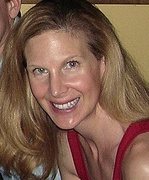The number of “social smokers” in the United States is on the rise, according to a new study. Between 1996 and 2001, the rate of non-daily smoking jumped from 16 percent to 24 percent of smokers, and it has continued to climb since then.
In California, for example, the percentage of smokers who light up only occasionally went from 26 percent in 1992 to 30 percent in 2005, state health figures show.
The new study, published in the August issue of the American Journal of Preventative Medicine, aims to help find ways to help social smokers quit. In the 1970s and 80s — as the health risks of smoking became increasingly apparent — the tobacco industry spent millions studying social smokers to figure out what made them tick, according to a June 17 article by Linda Carroll on the MSNBC Web site. http://www.ajpm-online.net/
The article quotes Maria Hynes, a 42-year-old nurse from Bridgeton, N.J., who says: “I don’t crave nicotine. I’ve never been one to have a cigarette while watching TV or reading the paper. When I was pregnant, it was no big deal to quit. So I’ve always checked nonsmoker on medical forms.” http://www.msnbc.msn.com/
The reasons for trend toward occasional versus heavy smoking aren’t fully known, but some suggest that a growing awareness of health risks, the stigma surrounding smoking, and the smoking bans in public places are causing people cut back.
But face it, any amount of smoking is still unhealthy. The people at the American Council on Science and Health created a Web site containing facts about smoking.
“Smokers start to smoke while they are in middle school or high school. Almost 90 percent of all smokers start to smoke before reaching the age of 18,” according to the site. “People make the decision to smoke -- one of the most important decisions of their lives -- when they are [teens] or just a little bit older. And unfortunately, many of them don’t have all the facts about cigarettes when they decide to start smoking. In fact, some of them believe myths about smoking that are just plain wrong.”
Get the facts: http://thescooponsmoking.org/xhtml/faq.php





Add a Comment5 Comments
This anti-smoking, anti-fat, anti-alcohol campaign against people who just want to
August 27, 2009 - 8:27pmbe free, has cost so much money with results the exact opposite of what
most people thought it may be. The government knows that by targeting
this population they would make gazillions of dollars in taxes, but they lose
much more by businesses closing due to bans and lost employment, thus
lost tax money. If you are not free to act irresponsibly, you are not free at
all. Don't believe the propoganda about second hand smoke, dig a little,
it's all false, paid for by big pharma for their own brand of nicotine.
This Comment
I have to disagree with you, sorry. Be FREE to eat what you want, be FREE to smoke all you want but don't do it around me. Not only has second hand smoke been proven to be detrimental to your health (please do your research) but the smell of cigarette smoke is enough to make me want to yank the cigarette out of some people mouths and crush it on the floor. There could not be anything ruder to me than someone blowing cigarette smoke towards me.
September 10, 2009 - 12:47pmThis Comment
I read an article about a boy that OD'd on Nicorette gum given at school without parental knowledge. So, very quietly, pharmaceutical nicotine is pushed on 12 year old kids. If anyone doubted that the anti-smoking crusade leads back to Johnson & Johnson, the cat is totally out of the bag!
August 27, 2009 - 8:25pmThis Comment
shs vs. wood smoke
http://www.yolocleanair.org/mythfacts.htm
Myth No. 1 - Secondary cigarette smoke is far more harmful to human health than fireplace emissions. That is why public smoking is widely banned but unrestricted fireplace use should be allowed.
Fact – Burning one cigarette (which is a misdemeanor in most cities if done within 20 ft of an entrance of a public building or other specified public locations) produces about 0.04 grams of PM10 particulate matter pollution. A 24-hour fire in an open hearth fireplace (which is legal even if within 20 ft of a school, senior home, or private residence) produces up to 1,416 grams of PM10 particulate matter (over 3 pounds!) - about 36,000 times the amount in a single cigarette!
August 27, 2009 - 8:24pmAnti-smoking is all about the money, not about health!
This Comment
The benefits of smoking tobacco have been common knowledge for
August 27, 2009 - 8:21pmcenturies, and big pharma knows this. From sharpening mental acuity to
maintaining optimal weight, the relatively small risks of smoking have
always been outweighed by the substantial improvement to mental and
physical health. Alzheimer's, Parkinson's, Tourette's Syndrome, even
schizophrenia and cocaine addiction are disorders that are alleviated by
tobacco. Tobacco shows promise to prevent colon and prostate cancer
and the endorsement for smoking tobacco by the medical establishment is
good news for smokers and non-smokers alike. The revelation that
tobacco is good for you is trumped by the pharmaceutical industry's plan
to substitute the natural and relatively inexpensive tobacco plant with
their overpriced and ineffective nicotine substitutions with 98% failure
rates for quitting for 1 year or more. Big pharma has spent billions
demonizing the pleasure of smoking using social engineering and profits
from bans that destroys private businesses. Follow the money!
This Comment